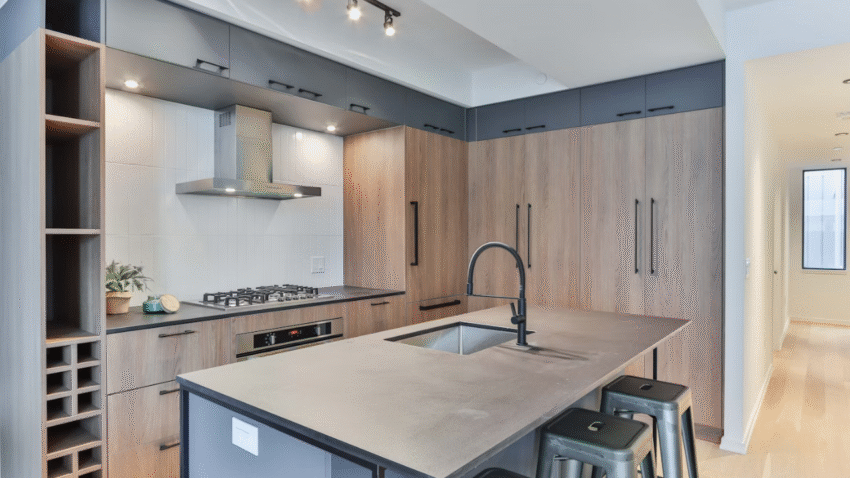Introduction
Ever cut into a roast chicken only to find it raw in the middle—or worse, overcooked and dry? That’s where a meat thermometer becomes your best kitchen ally. In this step-by-step guide, you’ll learn how to use a meat thermometer accurately, so you can cook meats to perfection, ensure food safety, and never second-guess your timing again.
Why Using a Meat Thermometer Accurately Matters in the Kitchen
Cooking meat to the right internal temperature is essential for both safety and flavor. Undercooked poultry or pork can harbor harmful bacteria like Salmonella or E. coli, while overcooked meats lose moisture, texture, and taste. A meat thermometer eliminates the guesswork.
When used properly, a thermometer ensures your chicken is juicy, your steak is tender, and your holiday turkey is cooked through without drying out. Whether you’re grilling, roasting, or pan-searing, it’s one of the simplest tools to elevate your kitchen confidence and prevent cooking mishaps.
Step-by-Step Guide to Using a Meat Thermometer Accurately
1. Choose the Right Thermometer
There are different types of meat thermometers:
- Instant-read digital thermometer – Fast, accurate, ideal for quick checks
- Probe thermometer – Stays in the meat during cooking with a wire connected to a display
- Dial thermometer – Inexpensive but slower and less precise
- Infrared thermometer – Not for internal temperature; good for surface checks only
Tip: For home cooking, a digital instant-read or probe thermometer offers the best balance of accuracy and convenience.
2. Know the Safe Cooking Temperatures
Here are the USDA-recommended internal temperatures:
- Chicken and turkey (whole or ground): 165°F (74°C)
- Ground meats (beef, pork, lamb): 160°F (71°C)
- Beef, veal, lamb (steaks, roasts): 145°F (63°C) + 3-minute rest
- Pork chops or roasts: 145°F (63°C) + 3-minute rest
- Fish and shellfish: 145°F (63°C)
Pro Tip: Print and post these near your prep area as a quick reference.
3. Insert the Thermometer Correctly
Placement is everything. To get an accurate reading:
- For poultry: Insert the probe into the thickest part of the breast or thigh, avoiding bone
- For roasts: Aim for the thickest part of the meat, away from fat or bone
- For burgers or ground meats: Insert from the side into the center of the patty
- For fish: Insert into the thickest section of the fillet or whole fish
Reminder: Hitting bone, fat, or pan surfaces can give false readings.
4. Check the Temperature Without Removing Meat from Heat Too Long
- For instant-read thermometers, insert and wait 3–5 seconds for the display to stabilize.
- For probe thermometers, monitor in real time without opening the oven repeatedly.
If using an oven-safe probe, leave it in throughout cooking and set an alarm for your target temperature.
5. Clean the Thermometer After Every Use
To avoid cross-contamination:
- Wash the probe or stem with hot, soapy water after each use
- Avoid immersing digital components in water
- Use a disinfecting wipe between checks if measuring multiple meats
Kitchen Tip: Keep a small towel and spray cleaner or wipes at your prep station for easy access.
Common Mistakes to Avoid
Mistake 1: Inserting the Thermometer Too Shallow
Shallow readings don’t reflect the internal temp.
Solution: Push the probe into the thickest part of the meat, at least halfway.
Mistake 2: Touching Bone or Fat
Bone and fat heat faster, skewing results.
Solution: Aim for the center of the leanest part of the cut.
Mistake 3: Not Letting Meat Rest
Pulling meat at exact temperature may lead to overcooking from carryover heat.
Solution: Remove meat 2–5°F before the target temp and let it rest.
Mistake 4: Using the Wrong Thermometer
Not all thermometers are designed for meat.
Solution: Use a proper digital or probe meat thermometer—not candy, oven, or infrared tools.
Mistake 5: Skipping Calibration
Thermometers can lose accuracy over time.
Solution: Check calibration by testing in boiling water (212°F/100°C) or ice water (32°F/0°C).
Extra Tips & Kitchen Hacks (H2)
Use Dual Probe Thermometers for Roasts
One probe stays in the meat, the other monitors oven air temperature—great for precision cooking.
Mark Your Thermometer
Use a small piece of tape to mark how deep to insert the probe for most meats—it saves time and ensures accuracy.
Practice on Everyday Meats
Get comfortable using your thermometer with chicken breasts, burgers, or pork chops so it becomes second nature.
Related Task: After mastering your meat thermometer, try pairing it with a resting chart or cooking time planner for foolproof meat dishes every time.
Conclusion
Using a meat thermometer accurately is one of the simplest ways to level up your kitchen game. Whether you’re cooking weeknight chicken or a special-occasion roast, it takes the guesswork out of doneness, improves flavor, and keeps your meals safe to eat.
One last tip? Keep your thermometer in a handy drawer near your prep station so it becomes a go-to tool every time you cook. Bookmark this guide so perfect meat is always just a probe away.
